Recent Articles
Popular Makes
Body Types
2025 Nissan Altima Road Test and Review
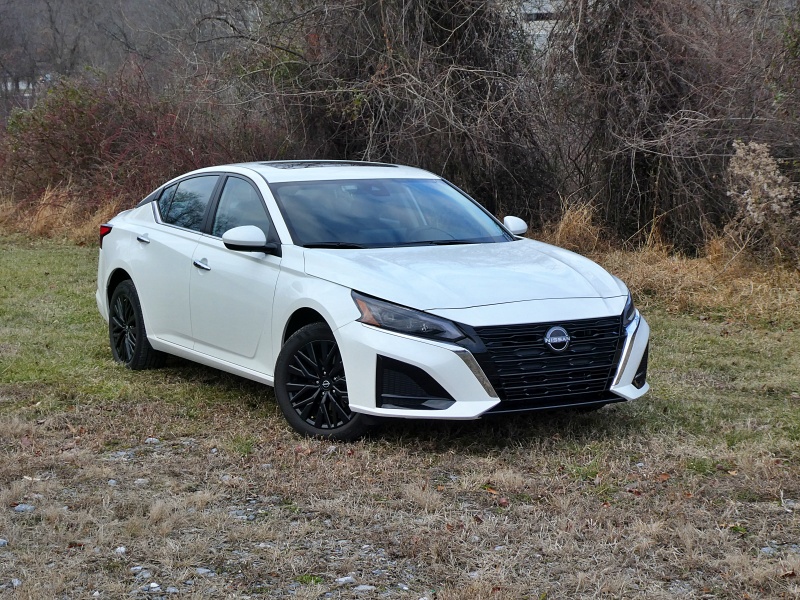
2025 Nissan Altima SV ・ Photo by Brady Holt
A decade ago, the mid-size sedan was most mainstream automakers’ bread and butter. They were the heart of the lineup and most brands’ best-sellers.
Since then, many buyers have shifted their allegiance to SUVs. Chrysler, Dodge, Ford, Mazda, and Volkswagen are among the brands that have discontinued their mid-size sedans since 2014. Now, the 2025 Nissan Altima faces just six rivals – two of which will disappear this year.
However, that doesn’t mean the competition isn’t fierce. To see if the aging Altima still has what it takes to survive in this market, we just spent a week testing a mid-level SV model. Keep reading to learn about this sedan’s pros and cons and whether it’s the right family-friendly four-door for you.
Lots of Features for the Money
The 2025 Nissan Altima starts at $27,000 for the base S model and just $430 more for the popular SV, like our test vehicle. Both come packed with standard safety features that cost extra on most rivals, but the SV’s modest price premium is an easy choice. It nets you a a power-adjustable driver’s seat, 17-inch alloy wheels instead of 16-inchers with plastic wheel covers, and an extra USB port. But even the S includes push-button starting, front and rear automatic emergency braking, blind-spot monitoring with a rear cross-traffic alert, and an 8-inch infotainment touchscreen with Apple CarPlay and Android Auto smartphone integration.
Next up is the sporty SR, which starts at $28,830 with a stiffer suspension, revised seats, 19-inch wheels, and sport-themed interior and exterior styling cues. The top SL, $33,300, includes all the Altima’s major options like leather upholstery, a 12.3-inch infotainment screen with GPS navigation, a nine-speaker Bose surround-sound stereo, wireless smartphone charging, heated front seats, an electronic parking brake, a sunroof, a surround-view parking camera, and adaptive cruise control. (Most of these features are options on the SV and SR, too.) All Altima trims come standard with front-wheel drive, but you can switch to all-wheel drive for an extra $1,500 on all but the base S.
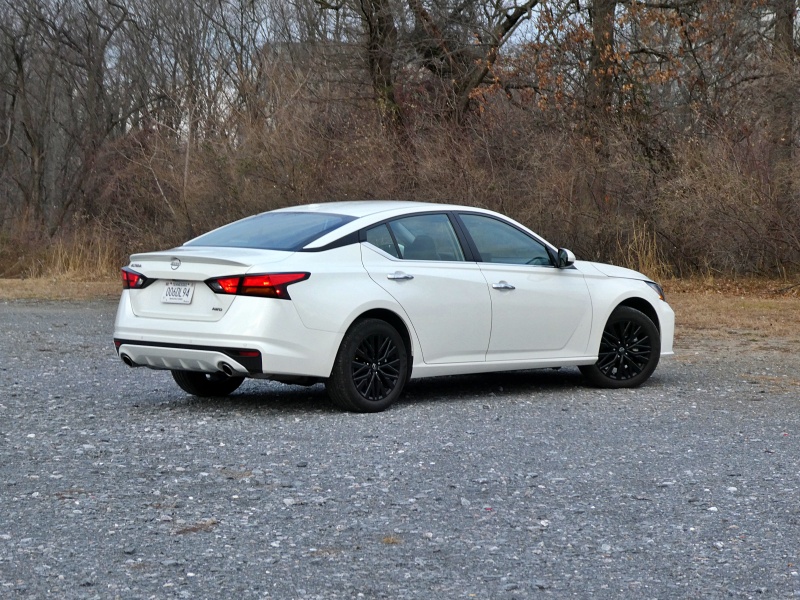
2025 Nissan Altima SV ・ Photo by Brady Holt
Plenty of Presence
One advantage of a sedan over an SUV is style and performance, and the Altima evokes that with a wide, low stance. A big grille runs all the way from the hood down to the ground, an aggressive element on a sedan that’s otherwise crisp and simple. Nissan’s “floating roof” connects the side windows to the rear windshield, and the roof flows smoothly into the trunklid. It’s a look that needs a big sedan body to pull off, so Nissan wisely gives you a stylistic reason to keep considering a mid-size sedan.
Overall, the Altima strikes an appealing balance: It’s assertive enough to avoid being dully generic, without being overly aggressive or showy. This is a car with presence. On the other hand, no one will turn their heads and stare – especially since the current Altima generation has seen only minor styling changes since 2019.
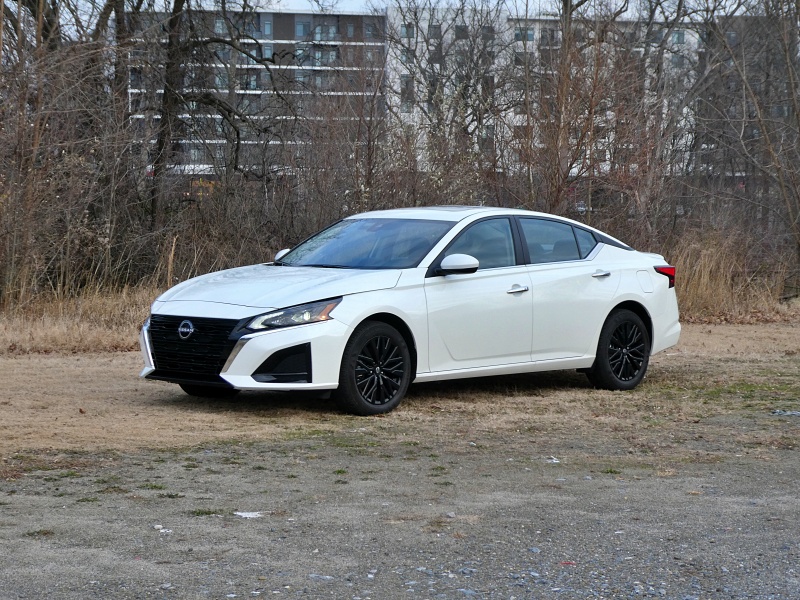
2025 Nissan Altima SV ・ Photo by Brady Holt
Simple Controls
Some cars are challenging each other to have the biggest screens and the fewest physical controls. If that’s not your style, you’ll welcome the Altima’s old-school simplicity – big gauges, big dashboard knobs, and physical buttons that you actually push.
The 8-inch screen is newly standard this year, while our test vehicle includes the optional 12.3-inch display. It has attractive graphics and enough room to present different info side by side, or to spread out the display of a single selected function. What’s more, the bigger screen fits better on the dashboard, filling in a space plagued by ill-fitting pieces of plastic trim around the 8-inch screen. You wouldn’t consider even a loaded Altima to rival a luxury car in terms of style or materials, like the latest Honda Accord or even Hyundai Sonata, but it’s a pleasant place to be and it doesn’t require a steep learning curve.
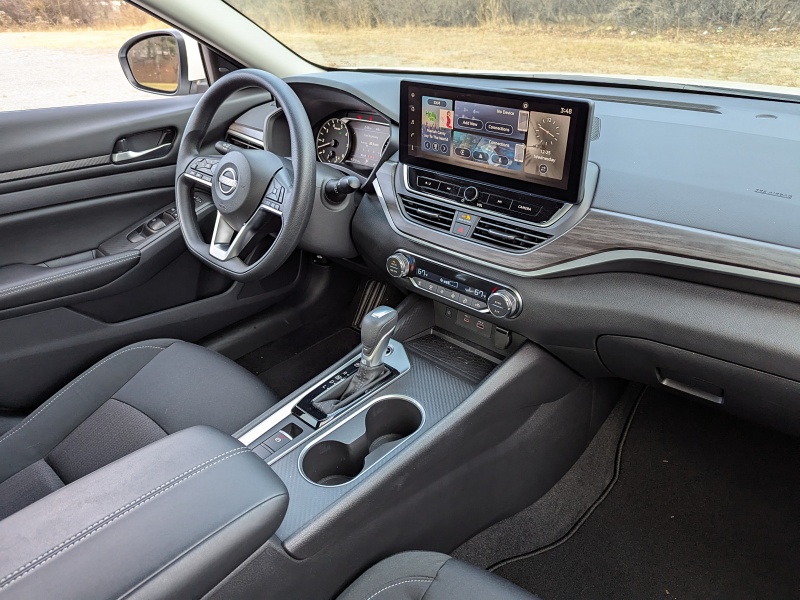
2025 Nissan Altima SV ・ Photo by Brady Holt
Extra-Comfy Seats
Mid-size cars are sometimes known interchangeably as family sedans. And while many families have moved on to SUVs, the Nissan Altima still fits the bill with spacious seating for five passengers.
The Altima uses what Nissan calls “Zero Gravity” seat foam, which it says provides uncommon support. We do find the Altima’s seats comfortable, and buyers can choose between standard front seats in the S, SV, and SL or “sport seats” in the SR. (Our own pick is the cushier standard seats.) Nearly all Altimas have power driver’s seats, and heated seats are standard or optional on most models as well. However, you can’t get ventilated seats like on some rivals. The backseat is comfortable and has plenty of legroom, though head space is tight in the center position, and you can’t get heated rear seats. Trunk space is a class-competitive 15.9 cubic feet.
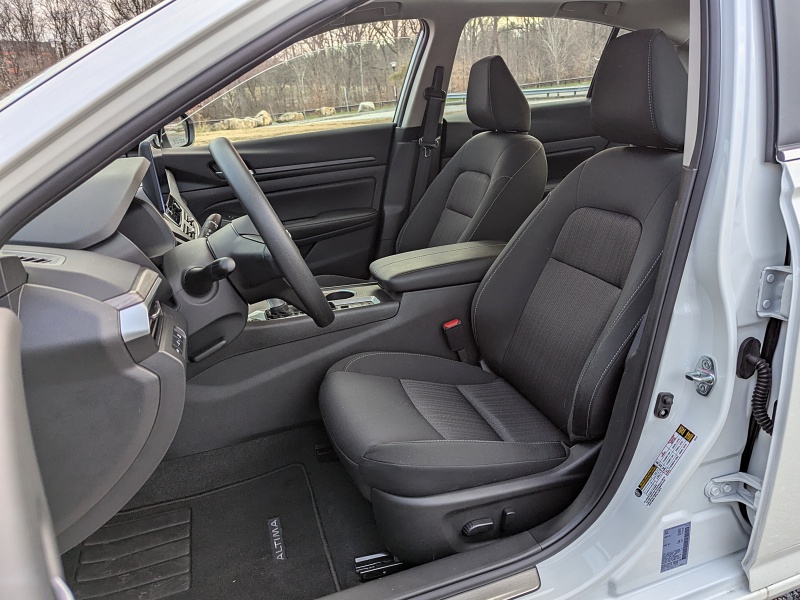
2025 Nissan Altima SV ・ Photo by Brady Holt
Easy Ride and Handling
Nissan likes to position the Altima as a sporty sedan. That’s a promise that its steering and handling don’t quite live up to. Instead, the Altima is supremely easy to drive – it glides along smoothly at whatever speed you want, fast or slow. The steering is too light for some tastes, but it’s natural and responsive. And the ride is smooth and comfortable on most trim levels.
The SR’s sport suspension does result in a stiffer ride. Bumps can slam through more harshly, and the car is less relaxed as it cruises along the highway. If sharper handling is a top priority, we’d choose a Honda Accord over the Altima. Otherwise, we’d just stick with the other trim levels' standard suspension. Unlike the Accord, the Altima has an optional all-wheel-drive system for superior traction in slippery weather – but it also has a slightly bumpier ride than the standard front-wheel-drive model.
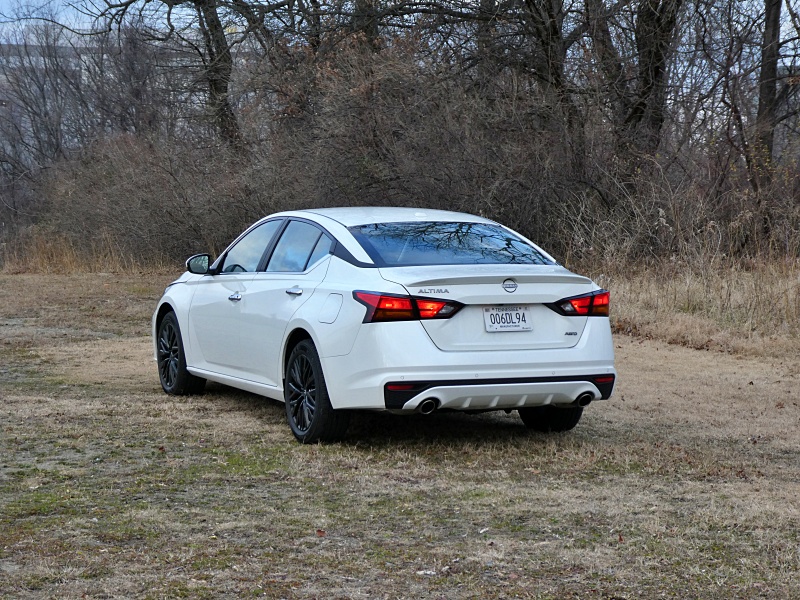
2025 Nissan Altima SV ・ Photo by Brady Holt
Good Gas Mileage for What It Is
For 2025, every Altima comes with a 2.5-liter four-cylinder engine making 188 horsepower and 180 lb-ft of torque, paired with a continuously variable automatic transmission. (This year, Nissan discontinued a previously optional 236-hp turbo engine.) This isn’t a high-performance machine, and when you put down your foot, you hear extra engine noise for a second before you really get moving. On the plus side, this engine has a smoother sound than a Toyota Camry’s.
Gas mileage is also great for a roomy, decently powerful mid-size sedan with a gasoline engine. The front-wheel-drive S and SV get an EPA-estimated 27 mpg in the city, 39 mpg on the highway, and 32 mpg combined – better than some compact economy cars. The SR and SL, with bigger wheels, drop to 27 mpg city, 37 mpg highway, and 31 mpg combined. If you opt for AWD, though, like on our test vehicle, mileage dips to 25 mpg city, 34 mpg highway, and 28 mpg combined. We did beat that estimate to average 32 mpg in our AWD test vehicle and 35 mpg in a base front-drive S model we drove a few years ago.
However, unlike its most popular competitors – the Toyota Camry and Honda Accord, along with the Hyundai Sonata – the Altima isn’t available with a gas-electric hybrid powertrain. So while the Altima gets great mileage on the open road, it can’t match those hybrids in stop-and-go traffic.
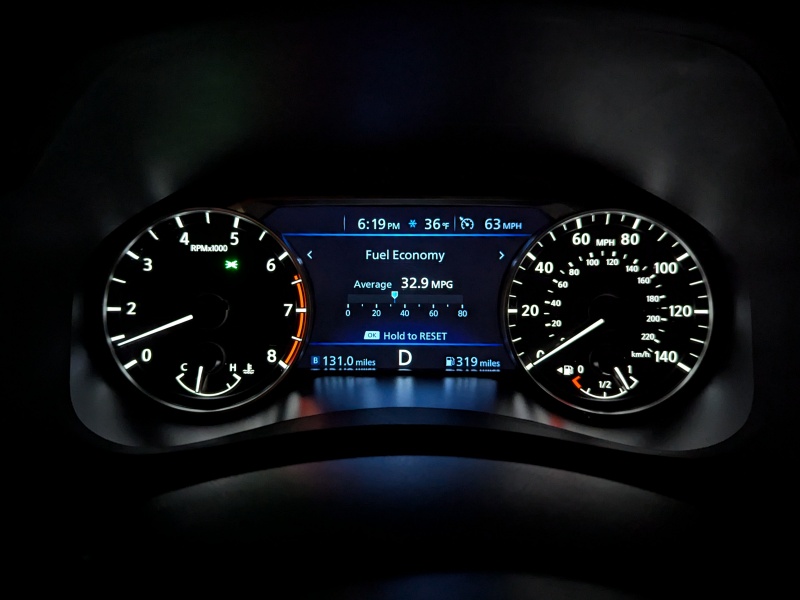
2025 Nissan Altima SV ・ Photo by Brady Holt
Lots of Standard Safety Features
As we mentioned, the 2025 Nissan Altima comes standard with a number of advanced safety features: forward and reverse automatic emergency braking, blind-spot monitoring with a rear cross-traffic alert, and a lane-departure warning. Unlike on some competitors, though, you have to pay extra for driver-assistance features like adaptive cruise control and lane-keeping steering assistance.
The Altima’s crash-test scores are mixed, with this sedan showing its age against newer competitors in the latest, most challenging evaluations. It earned a Poor rating from the Insurance Institute for Highway Safety for protection against a side impact from a big SUV or pickup, and it got the second-lowest score of Marginal for protecting rear-seat passengers in a frontal-impact collision. On the other hand, out of all the Altima’s competitors, only the Honda Accord and Toyota Camry performed measurably better in these tough tests. The Altima also earned five out of five stars overall from the National Highway Traffic Safety Administration, though just four stars for frontal-impact protection.
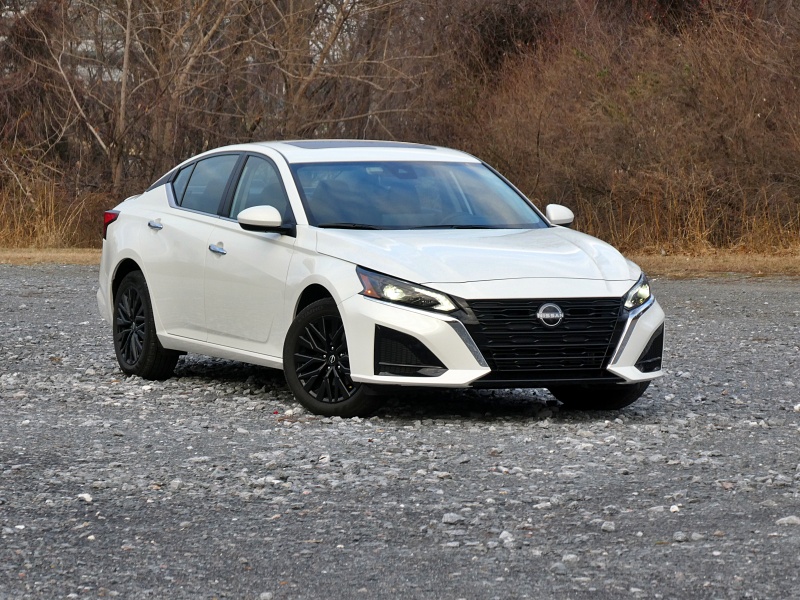
2025 Nissan Altima SV ・ Photo by Brady Holt
Competitors to Consider
Even with a dwindling number of mid-size sedans on the market, the Altima still faces tough rivals. We’d say its closest competitors these days are the Hyundai Sonata and its mechanical cousin, the Kia K5. All three are priced a little below than the best-selling Camry and Accord. The Accord is a crisp-driving sports sedan with a meticulously finished interior, while the newly redesigned Camry is now sold exclusively as an extra-efficient hybrid. (The Sonata and Accord also have optional hybrid powertrains.)
To our tastes, the Altima has the cushiest seats of the bunch, and it rides and handles a little better than the Sonata and K5. It also has simpler controls than all but the Accord, whose base touchscreen measures just 7 inches. And the Nissan gets better gas mileage than the Kia or than the Hyundai’s non-hybrid version. On the other hand, the Altima has perhaps the plainest interior style, and the rest are available with more powerful engines (standard on the Camry, an optional upgrade on the others). And as we mentioned, the Camry and Accord have better crash-test scores.
The two remaining mid-size sedans are both getting discontinued after the 2025 model year but are still available: the Chevrolet Malibu and Subaru Legacy. Both cost even less than the Altima, but they have some downsides. We like how the Malibu rides and handles, but its interior decor and safety technology haven’t kept up with the times. And the Legacy is spacious and comfortable, and equipped with all-wheel drive as a standard feature, but it’s an absolute snooze to drive and has a fussy infotainment system.
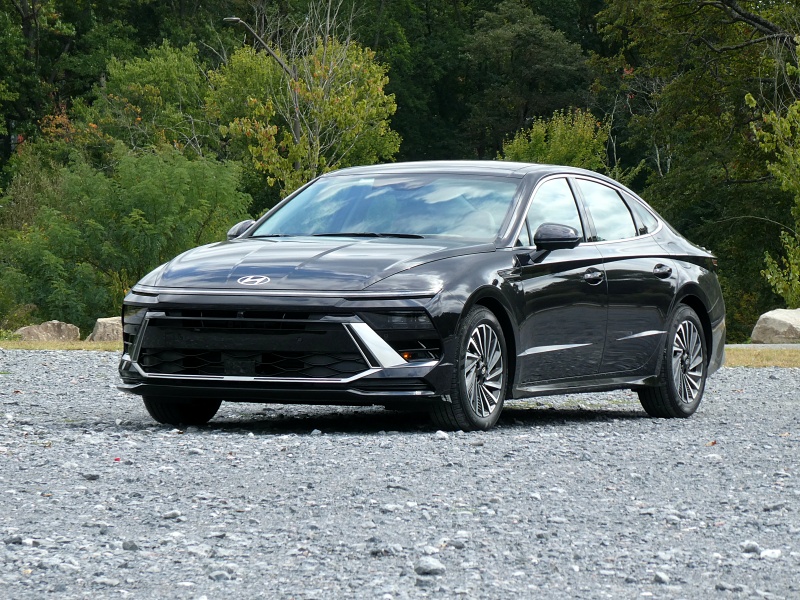
2024 Hyundai Sonata Hybrid Limited ・ Photo by Brady Holt
Final Thoughts
The 2025 Nissan Altima is a solidly nice mid-size sedan with few glaring weaknesses and plenty of strengths. The driver and passengers can stretch out comfortably inside. It’s packed with standard safety features at a reasonable price. It’s easy to drive, its engine – while not a powerhouse – sounds pleasant enough and gets good gas mileage.
You can find competitors that are more luxurious, more fun to drive, more economical (in hybrid form), or even less expensive than the Altima. We wish the dashboard trim fit together better with the base infotainment system, and we wish the Altima matched the class leaders in crash safety. But overall, it’s a worthy, well-priced mid-size sedan that holds up well in a still-competitive class.
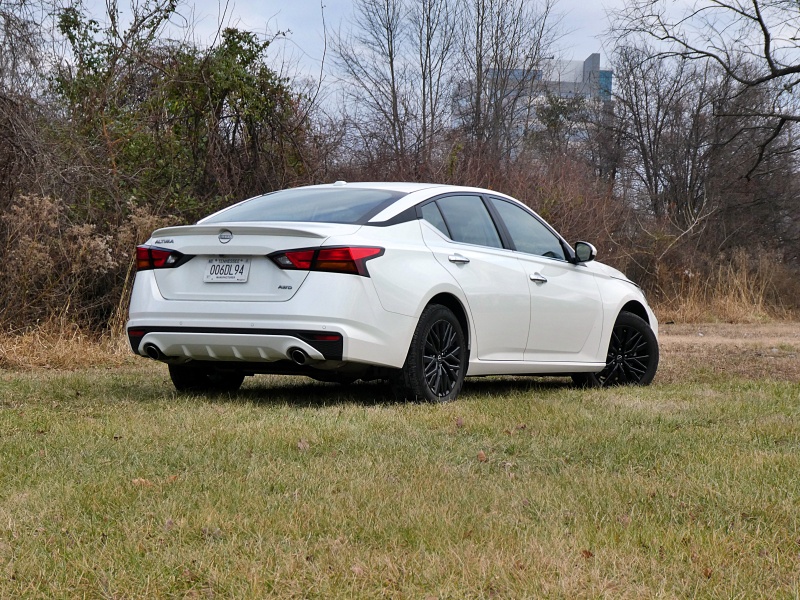
2025 Nissan Altima SV ・ Photo by Brady Holt